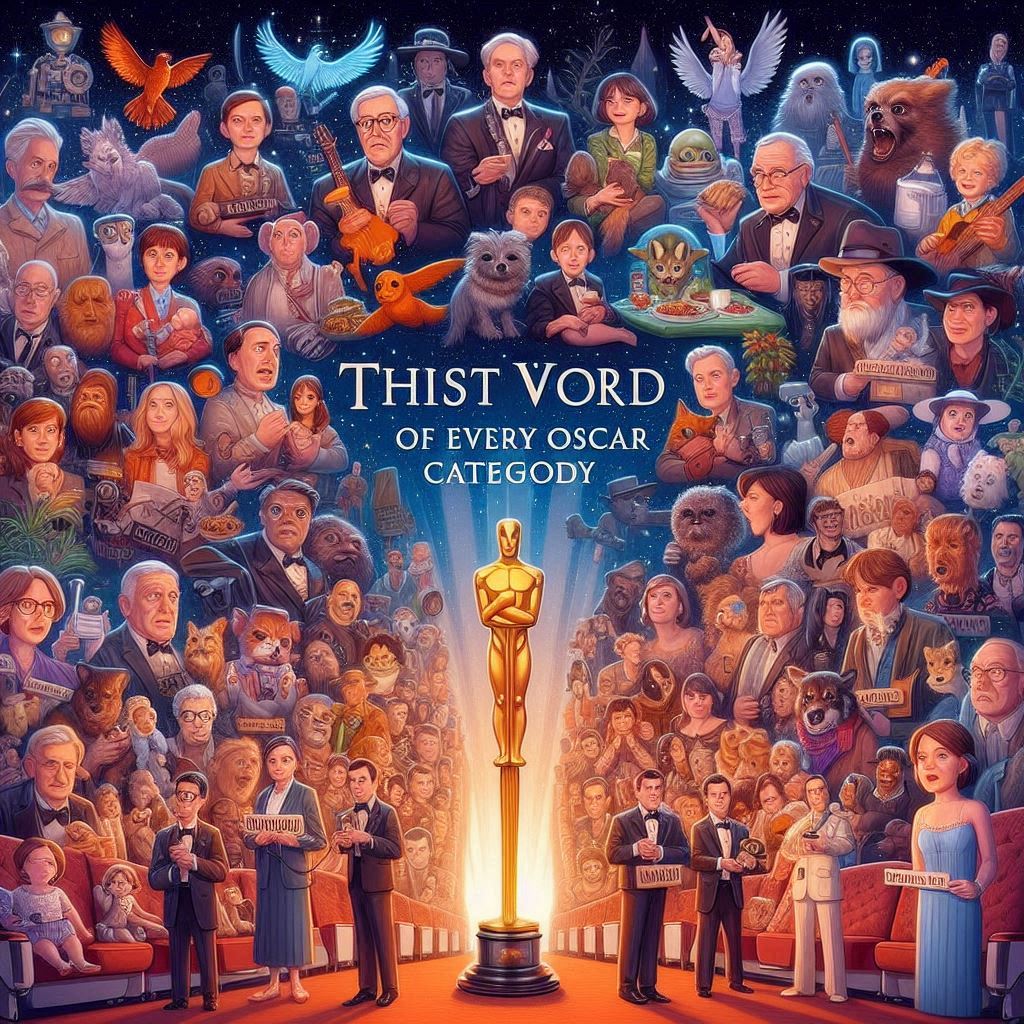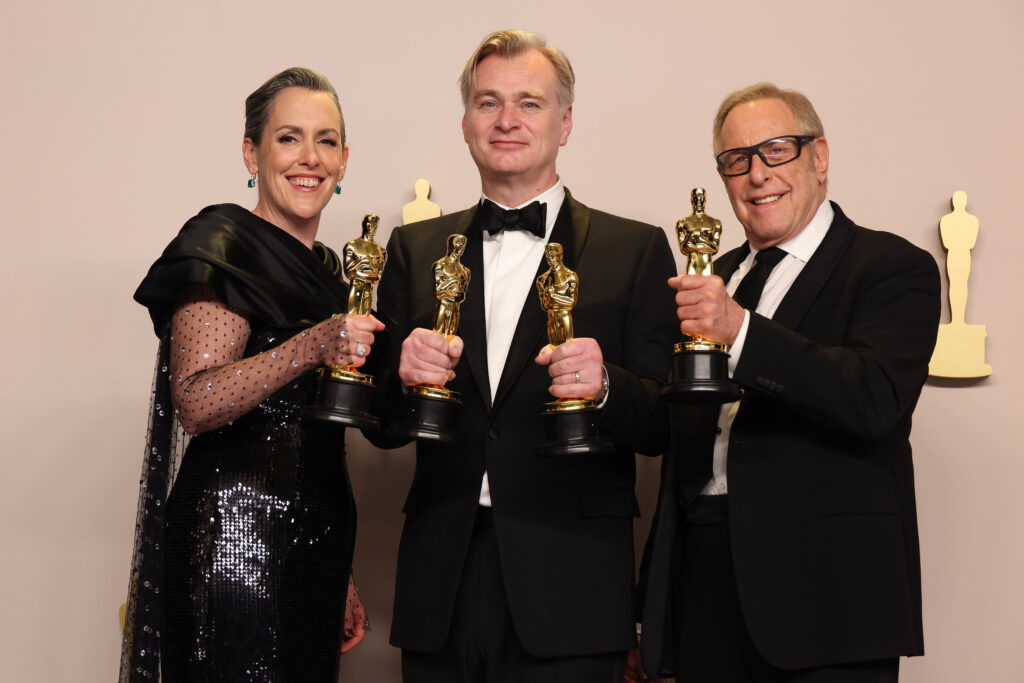Introduction to Oscar Categories
The Oscars, officially known as the Academy Awards, are the highest accolade in the film industry, celebrating exceptional achievements in cinema. Each year, the Academy of Motion Picture Arts and Sciences honors excellence across a variety of categories, each representing a unique facet of filmmaking. By examining the first word of every Oscar category, we gain insight into the core focus and significance of each award. This guide delves into the meaning behind these initial terms, offering a detailed understanding of what each category represents and how they reflect the artistry and skill involved in creating memorable films.
Understanding Oscar Categories
Oscar categories are crafted to spotlight various aspects of filmmaking, from acting and directing to technical prowess like cinematography and sound design. Each category serves as a benchmark for evaluating and celebrating the diverse talents that contribute to a film’s success. By exploring the first words of these categories, we uncover their fundamental essence and the specific areas of excellence they aim to honor. This exploration reveals the Academy’s criteria for celebrating cinematic achievements and highlights the broad spectrum of talents recognized by the awards.
The Importance of the First Words

The first word in each Oscar category often encapsulates its primary focus and purpose. These terms provide a shorthand for understanding the essence of the award. For instance, the term “Best” signifies a pursuit of the highest quality, setting a standard for excellence. Analyzing these initial words allows us to grasp the Academy’s criteria for success and appreciate the structured approach to recognizing exceptional talent in filmmaking.
A Closer Look at the First Words
Here’s a closer examination of the first words in each Oscar category and what they reveal:
Best Picture
The word “Best” in “Best Picture” underscores the quest for the highest quality in film. This category is the pinnacle of achievement, honoring the film that excels across all aspects of filmmaking. It reflects the culmination of storytelling, direction, acting, and technical execution.
Best Director
“Best Director” highlights the role of the director as the guiding force behind a film. The term “Best” emphasizes the director’s exceptional skill in shaping the film’s vision and execution. This award recognizes the director’s impact on the overall success and direction of the film.
Best Actor
In “Best Actor,” the term “Best” signifies the search for the most outstanding male performance. “Actor” indicates that this award celebrates an individual’s ability to bring a character to life with exceptional depth and presence.
Best Actress
Similar to “Best Actor,” the term “Best” in “Best Actress” denotes excellence in female performance. “Actress” highlights the award’s focus on recognizing the exceptional talent and emotional range brought to a leading female role.
Best Supporting Actor
The term “Supporting” in “Best Supporting Actor” indicates that the award honors male performances that enhance the lead roles. While not always in the spotlight, these performances are crucial to the film’s success, enriching the narrative through their nuanced contributions.
Best Supporting Actress
“Best Supporting Actress” follows the same principle, celebrating outstanding female performances in supporting roles. The term “Supporting” underscores the significance of these roles in complementing and enhancing the lead performances.
Best Original Screenplay
The term “Original” in “Best Original Screenplay” emphasizes the category’s focus on screenplays created from original ideas, not based on existing material. This award celebrates the creativity and originality of storytelling.
Best Adapted Screenplay
“Best Adapted Screenplay” features the term “Adapted,” indicating that the screenplay is based on pre-existing material. This category honors the skill involved in transforming source material into a compelling screenplay.
Best Animated Feature
“Animated” in “Best Animated Feature” specifies that the category is dedicated to films created through animation. This award recognizes the artistry and technical expertise involved in crafting animated films.
Best Documentary Feature
The term “Documentary” in “Best Documentary Feature” focuses on films that capture real-life events and issues. This category celebrates the craft of storytelling through factual content, offering insights into real-world subjects.
Best International Feature
“International” in “Best International Feature” refers to films made outside the United States, highlighting the global scope of cinema. This category celebrates excellence in filmmaking from diverse cultures and regions.
Best Cinematography
The term “Cinematography” in “Best Cinematography” reflects the award’s focus on the visual elements of filmmaking. This category honors the art of capturing images and crafting the film’s visual style.
Best Film Editing
“Editing” in “Best Film Editing” underscores the importance of assembling a film’s footage into a coherent narrative. This category recognizes the skill required to create a smooth and effective storytelling experience.
Best Production Design
The term “Production” in “Best Production Design” emphasizes the creation of the film’s visual environment, including sets and props. This award celebrates the detailed work involved in designing the film’s physical spaces.
Best Costume Design
“Costume” in “Best Costume Design” refers to the design and creation of clothing for characters. This category honors the artistry involved in enhancing character development and visual style through costumes.
Best Makeup and Hairstyling
The term “Makeup” in “Best Makeup and Hairstyling” signifies the category’s focus on altering actors’ appearances. This award recognizes the skill involved in creating transformative looks that support the film’s characters.
Best Visual Effects
“Visual” in “Best Visual Effects” highlights the category’s focus on technical achievements in enhancing a film’s look. This award celebrates the creativity and expertise involved in producing visual effects.
Best Sound
The term “Sound” in “Best Sound” encompasses all aspects of a film’s audio experience. This category honors the technical achievements in crafting a compelling and immersive auditory experience.
Historical Evolution of Oscar Categories

Since the first Academy Awards in 1929, Oscar categories have evolved significantly. Initially focusing on acting and directing, the scope of the awards has expanded to include technical and artistic achievements. The introduction of new categories, such as Best Animated Feature and Best Visual Effects, reflects the Academy’s recognition of emerging trends and technologies in filmmaking.
Fun Facts About Oscar Categories
The Oscars are rich with history and trivia. For example, “Best Picture” was originally “Outstanding Picture,” and “Best Supporting Actor” was first awarded in 1936. The addition of “Best Animated Feature” in 2002 marked a significant acknowledgment of animation’s growing importance in cinema. These facts offer a glimpse into the Oscars’ history and evolution.
Conclusion

Exploring the first words of each Oscar category provides a unique perspective on the awards and their significance. From “Best” to “Animated,” these terms encapsulate the essence of each award, offering insights into the Academy’s criteria for excellence. Understanding these terms enhances our appreciation of the diverse talents recognized by the Oscars and deepens our understanding of what it takes to achieve cinematic excellence.
FAQs
- What is the purpose of the “Best Picture” category?
“Best Picture” honors the film that exemplifies the highest level of overall filmmaking excellence, encompassing all elements of the film. - How does the “Best Director” award differ from the “Best Picture” award?
“Best Director” focuses on the individual contribution of the director, while “Best Picture” recognizes the film as a whole, reflecting all aspects of filmmaking. - What does “Best Original Screenplay” signify?
“Best Original Screenplay” is awarded to screenplays that are not based on existing material, celebrating originality and creativity in storytelling. - When was the “Best Animated Feature” category introduced?
The “Best Animated Feature” category was added in 2002 to acknowledge excellence in animated films. - Why is the “Best Sound” category important?
“Best Sound” honors technical achievements in audio, including sound mixing and design, which are crucial for enhancing the overall cinematic experience.

